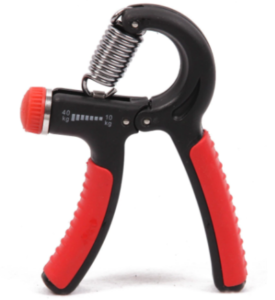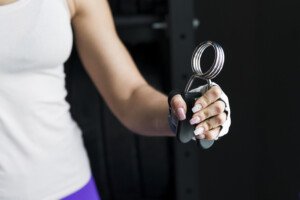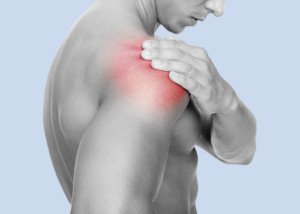At some point after your deadlift workout or even next day, does the underside of your fingers feel achy and stiff?
Here are ways to prevent this.
The peculiar thing about this phenomenon is that it usually doesn’t occur during a deadlift routine.
In fact, your fingers may feel pretty normal as you continue on with your session after the deadlift routine has been completed.
But lo and behold, next day, you can really “feel it” in the fingers.
It’s not the typical feeling of soreness. It’s an odd kind of aching, kind of like an overstretched feeling with a touch of crampiness.
Prevention of Aching or Painful Fingers After Deadlifting
“The first tip is to make sure that you’re gripping with the correct part of your hand,” says Dr. Megan McLain, PT, DPT, cofounder of Intuitive Choice Physical Therapy & Wellness in Atlanta, GA.
“You should grip the bar between the mid-palmar crease and the base of your fingers to limit as much strain going to the fingers.
“The muscles that help you perform grip are primarily located in the forearm, so the farther down in your fingers you grip the bar, the more difficult the exercise is for your wrist and finger flexors to perform.
“These muscles can get irritated and then have decreased power output, meaning that it will be difficult to tolerate gripping and lifting.
“You want strong fingers that can grip — but without having the fingers feeling excessively achy or like they’re getting stuck in that position.
“A quick fix if it occurs during the workout is to perform some mobility exercises into wrist extension.
“This involves extending the elbow with your palm facing away from you [wrist is flexed] and then pulling the fingers [with your other hand] back toward you.
“You should feel a stretch on the underside of your forearm.
“Perform gripping exercises with a stress ball in between weightlifting sessions and fingertip planks [a standard plank but on your fingertips] as long as you can perform the exercise without the joints bending backward excessively.”
Eccentric Contractions Using a Hand Grip Tool

Another way to make the fingers, particularly the flexor pulleys, sturdier is to squeeze a hand grip device all the way closed – then slowly release (let it open).
The release should take about five seconds.
This is the eccentric or “negative” phase of the contraction. Negative training is a great way to increase strength, even if the muscles being worked are tiny.
Do three sets of 8-10 reps most days of the week. This can be done while watching TV, walking on a treadmill, listening to music, etc.

Freepik.com
But make sure you’re not doing something too distracting during this exercise, as you may end up releasing too quickly.
The key to making the little muscles in your fingers more resistant to postworkout discomfort is that five-second release.
For best results and better concentration, do one hand at a time. Rest one minute in between the sets.
 Dr. Megan McLain, PT, DPT, puts her clients first while providing one-on-one in-home care. With physical therapy and health coaching services, Dr. McLain addresses all aspects such as physical barriers, mindset, accountability and knowledge that may be impacting the client’s experience.
Dr. Megan McLain, PT, DPT, puts her clients first while providing one-on-one in-home care. With physical therapy and health coaching services, Dr. McLain addresses all aspects such as physical barriers, mindset, accountability and knowledge that may be impacting the client’s experience.
 Lorra Garrick is a former personal trainer certified by the American Council on Exercise. At Bally Total Fitness she trained clients of all ages for fat loss, muscle building, fitness and improved health.
Lorra Garrick is a former personal trainer certified by the American Council on Exercise. At Bally Total Fitness she trained clients of all ages for fat loss, muscle building, fitness and improved health.
.



























